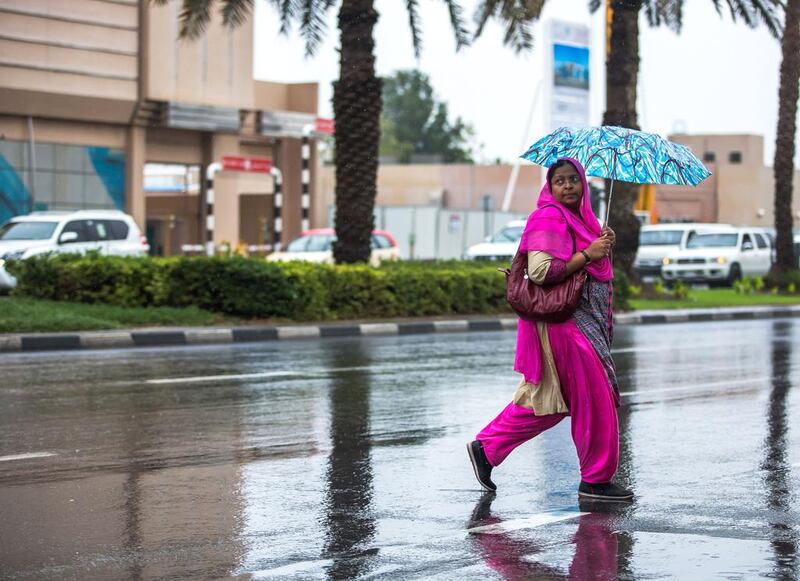ABU DHABI // Daily cloud seeding by the National Centre of Meteorology and Seismology may have increased the amount of rain across the country.
The national weather bureau said it had launched about 20 rain-boosting flights since Thursday to blast hygroscopic salt, which attracts and holds water, into the clouds to try to produce more moisture.
“Every day, we had cloud seeding operations,” said Dr Ahmad Habib, a meteorologist with the bureau. “The cloud seeding helps to increase the amount of rain from the cloud.”
Asked how much of an impact the operations had on daily rainfall, Dr Habib said: “It is a really hard question to answer. It is very complicated.”
But he said studies conducted between 2002 and 2006 suggested the rain enhancement programme could increase rain by between 10 and 30 per cent.
Since Thursday, nearly 200 millimetres of rain drenched the mountains in Ras Al Khaimah, leading to waterfalls that turned wadis into rushing rivers and flooded roads.
The heavy rainfall wasn’t restricted to the Northern Emirates, though. Barakah, in Abu Dhabi’s Al Dhafra Region, received the second-highest amount of rain since Thursday – 179.4mm. In Sweihan, in the emirate’s interior near Al Ain, 89.8mm of rain has fallen.
Dr Habib said the unstable weather system – and its accompanying thunder, lightning, strong winds, rain and sporadic hail – that affected the country on and off for about five days is normal for this time of year.
“Now it is a transition period between winter and summer, so the unstable conditions are expected,” he said, giving the example of the spectacular two-day storm that swept across the UAE last March, forcing authorities to close schools and events.
“Last year there was more rain. Also, the intensity of the rain last year was more than in this case. It is unstable conditions but it is normal.”
But Nasser Haddad, a meteorologist with the private company ArabiaWeather in Jordan, said the recent storms over the UAE had been anything but ordinary.
“The UAE was affected by instability in the past couple of days causing strong thunderstorms over Dubai, Sharjah and Abu Dhabi,” Mr Haddad said. “It is quite unusual in terms of the intensity and the period of time.
“This might happen from year to year but the intensity and the period of time – two or three continuous days – that is an unusual event in the UAE.”
Some areas of Saudi Arabia, Bahrain and Qatar were also affected by the unstable weather, which was caused by a mixture of warm, humid air from the UAE and a cold mass pushed in from Kuwait and Iran.
Mr Haddad said the worst of the storm had passed.
“We have decreasing activity,” he said.
“The weather will be more stable compared to the last few days.”
The weather bureau said partly cloudy skies would continue for the next few days and that some parts of the country, particularly over the islands, could experience light rain.
“There is still a chance for some rain, from light to moderate in general,” said Dr Habib. “And then the cloud will decrease gradually.”
rpennington@thenational.ae





